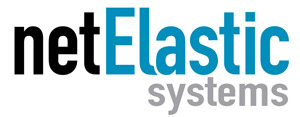The Internet Engineering Task Force (IETF) created IPv6 in 1998 to address the limited number of IPv4 addresses. Given the rapid adoption of IPv4, many people also expected a quick adoption of IPv6. However, that hasn’t happened.
IPv6 was created almost twenty-five years ago. And according to Google, only 40% of users access Google over IPv6. That means 60% still access Google over IPv4. And just under 37% of the Alexa Top 1000 websites are currently reachable over IPv6, according to World IPv6 Launch.
Why Has the Transition to IPv6 Taken So Long?
IPv6 is not backward compatible with IPv4, so native IPv6 devices can’t directly communicate with IPv4-only devices. Unfortunately, this prevents a seamless transition. And it costs time and money for broadband providers to upgrade all their routers, switches, and servers to IPv6.
Moving to IPv6 would involve at least three requirements/investments:
- Your customer premise equipment (CPE) would have to support it
- Your network infrastructure would need to support it
- DDI: DNS, DHCP, and IP address management (IPAM) would have to support it
Needless to say, this is a major endeavor. Not to mention the operational issues of supporting IPv6.
Another reason for the slow transition to IPv6 is priorities. Governments around the world are spending millions and billions of dollars to expand broadband access, and service providers are working feverishly to take advantage. As a result, broadband providers are focused on putting fiber in the ground. That’s the number one priority. Transitioning to IPv6 takes a back seat.
The perceived rewards (or lack of rewards) in moving to IPv6 are also having an effect. Currently, IPv6 is no faster or more secure than IPv4. And the benefits of staying with IPv4 are plenty:
- IPv4 is simpler to use
- The majority of websites use IPv4
- It’s a proven technology
Also, subscribers aren’t asking for IPv6. There’s little to no consumer demand.
Bottom line, there aren’t enough IPv6 benefits for most broadband providers to invest the considerable time and money required to make the change. Given this, most experts believe the transition to IPv6 will not be complete for many years, if not decades.
IPv4 Address Pricing
My basic economics course taught me that when supply is constrained and demand increases, prices will rise. These economic principles drove up IPv4 address prices at a historic rate in 2021.

Last year the reported market price for IPv4 addresses doubled, from approximately USD $27 per IPv4 individual address at the end of 2020, to around USD $55 per address in December 2021.
With the price of IPv4 addresses increasing rapidly and broadband providers not having enough resources to make the complex, time-consuming, and expensive transition to IPv6, what options do service providers have?
Carrier-Grade Network Address Translation (CGNAT)
A popular solution is using CGNAT, which enables a single router to act as an agent between the internet and a local private network, so that one public IP address can represent hundreds, or even thousands of devices within the private network. By sharing a public IP address among many private IP addresses, NAT limits the number of public IP addresses an organization has to use, conserving its IPv4 addresses.
Not All CGNAT Solutions are Created Equal
Traditional CGNAT vendors pride themselves on having advanced features. However, advanced features usually come with advanced (or high) prices. This may not be a problem for large carriers with large budgets. Unlike large carriers, local and regional carriers may prefer a scalable, cost-effective CGNAT solution.
netElastic CGNAT
A cost-effective alternative to higher priced solutions is netElastic CGNAT. netElastic’s high-performance virtual router technology is at the heart of its CGNAT, including a scalable software architecture that delivers a high-level of translation performance.
Using DPDK and advanced packet processing, netElastic CGNAT can achieve near line-rate throughput on 10G, 25G, 40G, and 100G interfaces. It’s also highly scalable (scales by cores) and can deliver performance well over 360 Gbps per server. netElastic also supports up to 60,000 subscribers and 6 million NAT sessions.
Legacy CGNAT solutions run on costly, proprietary hardware. In contrast, netElastic CGNAT software runs on Intel server technology, which significantly lowers costs and increases flexibility. Broadband providers using netElastic CGNAT have achieved up to 80% cost savings over legacy CGNAT solutions. They also can easily sign up new subscribers without worrying about obtaining new IPv4 addresses.
To learn more about CGNAT, please read the white paper on Can Implementing CGNAT be Easy and Affordable?


